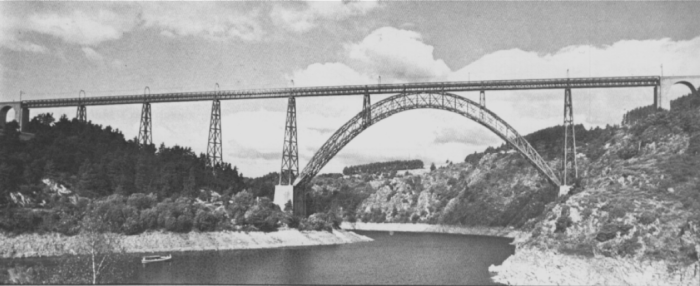THE
BUILDING
At
the end of the year 1880, the achievement of the viaduct works started
under the supervision of Léon Boyer, the creator of Garabit,
and of Gustave
Eiffel,
director and in charge of the project. For this grandiose challenge,
about one thousand workers were mobilized in four principal sectors:
the masonry, the roadway, the piles and the arch. The
Eiffel company
was hired for that building, because it was the only
one able to build this viaduct. The materials used may seem rudimentary
today, but at this time they were the top of
technology, notably in the domain of
metallurgy. The technic used had already been proved
valid on the bridge of Rouzat over the Sioule: it was a railway
which entered on the viaduct at the valley’s edge, passing first
on masonry arches, then on a big girder which was built on metallic
piles. This technic was improved, for the occasion, by the building
of a big metallic arch, showpiece of the work. This arch was formed
by two half-arches, built cantilever without scaffolding whose tops joined.
|

|




